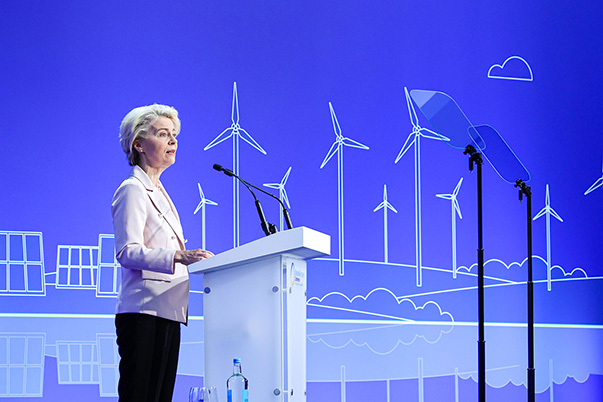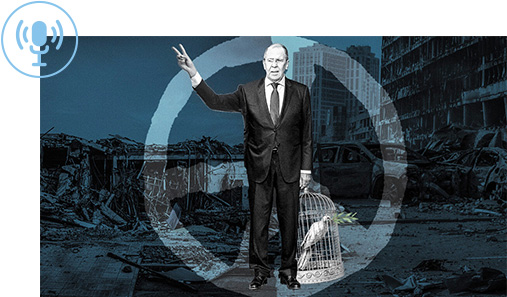
Chapter 1 – The EU’s response to Russia’s war of aggression against Ukraine
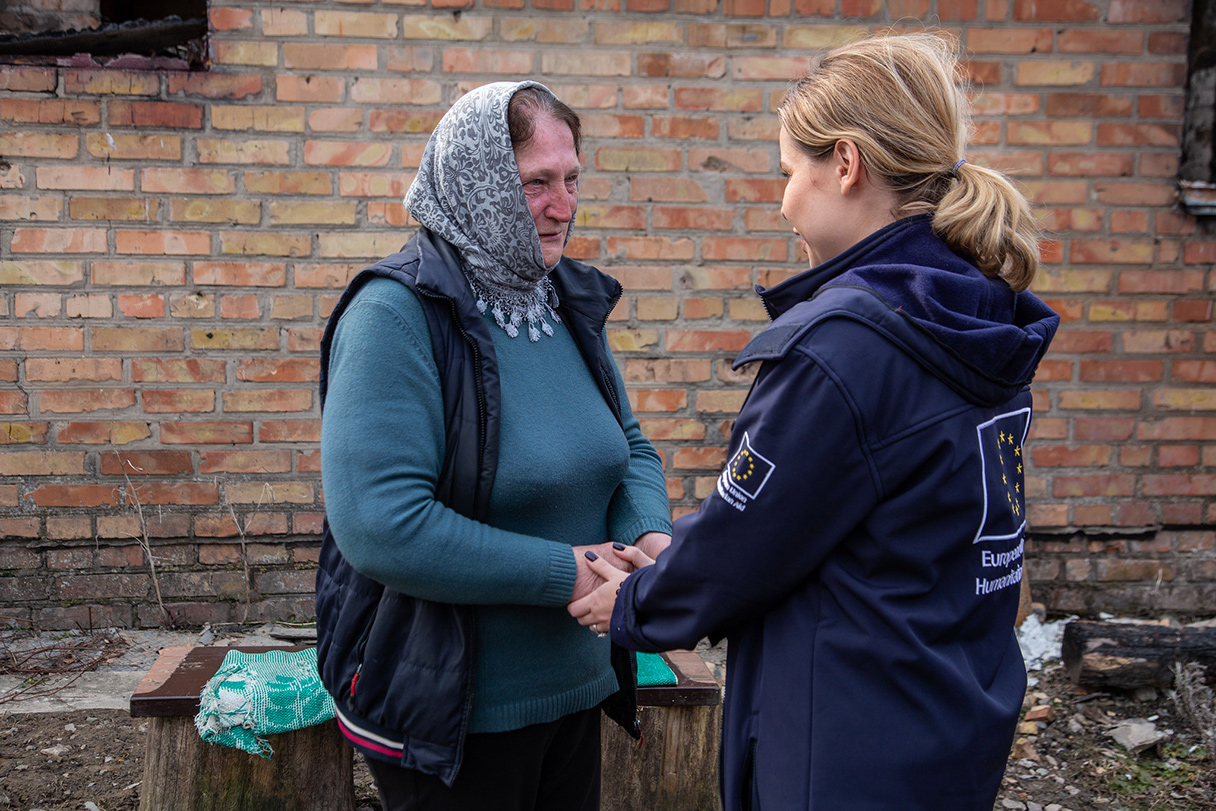
Introduction
Russia’s war of aggression against Ukraine is a threat to the very essence of democracy, and reminds the global community of the dangers of authoritarianism. The European Union’s unwavering support for Ukraine is more than solidarity with a neighbouring country in the face of an unlawful and unjustified invasion; it reflects a shared commitment to democratic principles and to the safeguarding of the rules-based international order and peace in Europe.
In 2023, the EU continued to provide support to Ukraine in the face of Russia’s unprovoked and unjustified war of aggression and its illegal annexation of parts of Ukrainian territory. This chapter shows the various ways in which the EU stands by Ukraine, which include providing financial, civil protection and humanitarian aid; countering disinformation; welcoming Ukrainian refugees; military assistance and training; assisting in Ukraine’s defence and reconstruction; and ensuring that Russia faces consequences for its crimes through sanctions and prosecution.
Solidarity with Ukraine
Financial assistance and military support
By the end of 2023, the EU and its Member States had made available close to €85 billion in overall assistance - open a new tab. to Ukraine and its people since the start of Russia’s war of aggression. This includes, in particular, €25.2 billion of macro-financial assistance - open a new tab., including a support package of €18 billion - open a new tab. for Ukraine in 2023 through the Macro-Financial Assistance Plus instrument. Macro-financial assistance is a type of financial aid provided by the EU to help partner countries facing serious financial difficulties stabilise their economies and make necessary reforms. These funds are helping Ukraine to continue to pay wages and pensions; to keep essential public services running, such as hospitals, schools, and houses for relocated people; and to restore critical infrastructure. They are also helping the country carry out institutional reforms, such as anti-corruption and judicial reforms.
The combined military assistance provided to Ukraine by the EU and its Member States to date amounts to more than €27 billion, including €5.6 billion allocated via the European Peace Facility - open a new tab.. This includes the joint procurement and immediate delivery of ammunition to Ukraine agreed in March 2023 - PDF file, open a new tab., with about 313 600 rounds of ammunition and 3 315 missiles delivered at the end of the year. The European Peace Facility is also contributing to enhancing the capabilities of the Ukrainian Armed Forces through the EU Military Assistance Mission in Support of Ukraine - open a new tab., with an allocation of €362 million managed by the Council of the European Union. The bulk of the remaining military assistance to Ukraine is provided and financed bilaterally by Member States.
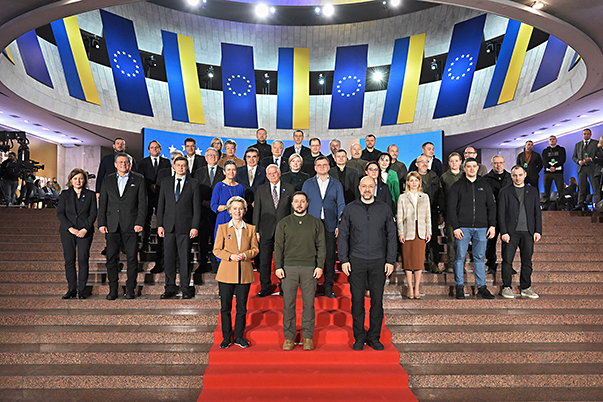
Military support
The European Peace Facility is an instrument that is used to finance external action that has military or defence implications. It also enables the provision of assistance to partner countries in peacekeeping operations. It is funded by the Member States.
The facility has had a central role in providing military support to Ukraine. Since the start of Russia’s unprovoked and unjustified military aggression against Ukraine, the EU has adopted seven support packages through this instrument. The support takes the form of deliveries of defensive military equipment to the Ukrainian Armed Forces, along with the three-track ammunition initiative to support the Ukrainian Armed Forces, for a total amount of €5.6 billion.
Through the facility, the EU is also funding the training of the Ukrainian Armed Forces via the EU Military Assistance Mission, which has headquarters in Poland and Germany. For the first time in its history, therefore, the EU is providing military training to a country at war. By the end of 2023, the mission had trained around 39 000 Ukrainian soldiers.
In response to the Council’s urgent call to deliver ammunition to Ukraine, the Commission proposed the Act in Support of Ammunition Production - open a new tab. in May 2023. Adopted in July, the act aims to strengthen the responsiveness of the EU defence industry and its ability to ensure the timely supply of ammunition and missiles in Europe. The Commission allocated €500 million for this purpose, using grants to be issued in 2024 to enhance and expedite production. (See Chapter 8 for details on the EU’s enhanced defence capabilities.)
The abovementioned total of almost €85 billion also includes €17 billion made available to Member States to host and support refugees. The EU is providing temporary protection - open a new tab. to almost 4.2 million Ukrainian refugees currently living in the EU.
The EU, along with its Member States, has also committed around €3 billion for humanitarian aid in Ukraine - open a new tab.. Of this amount, the Commission has directly provided around €800 million. (See the section ‘Humanitarian and civil protection aid for Ukraine’ below for more details.)
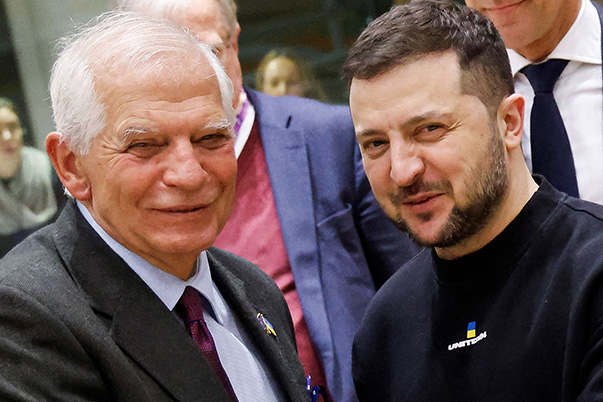
In June, Ukraine was given access to the EU’s programme for infrastructure funding - open a new tab., the Connecting Europe Facility - open a new tab.. This means that Ukraine can now apply for EU funding for infrastructure projects that will improve its energy, transport and digital connections with the EU. 2023 also saw the historic decision - PDF file, open a new tab. by the EU to open accession negotiations with Ukraine, acknowledging the significant efforts it has made to align with EU standards (see Chapter 8).
Finally, the EU also supported Ukraine’s neighbours throughout the year, particularly Moldova, which received €58 million of humanitarian assistance, an increase in macro-financial assistance and access to the EU’s programme for infrastructure funding - open a new tab..
Sources: Flash Eurobarometer 533 - open a new tab., September 2023; Standard Eurobarometer 100 - open a new tab., December 2023.
EU sanctions
In addition to financial aid and other tangible support for Ukraine and its people, the EU has imposed unprecedented and far-reaching sanctions against Russia in response to its war of aggression against Ukraine.
Sanctions are one of the EU’s instruments in response to this unjust and illegal war, with the aim being to weaken Russia’s economic capacity and limit its ability to finance its war of aggression. In this sense, sanctions fulfil the EU’s key objective, which is to continue to work for a just and lasting peace. Since 23 February 2022, the EU has imposed a total of 12 sanctions packages against Russia. They target not only specific people and entities, but also the financial, industrial, transport and energy sectors.
In February and June 2023, the EU adopted its 10th - open a new tab. and 11th - open a new tab. packages of sanctions against Russia. These added 225 individuals and entities to the EU’s sanctions list. The additional measures included new bans on exporting critical technology and industrial goods to Russia, particularly technology with potential military applications. Furthermore, these packages targeted additional Russian sources of disinformation, expanded the list of prohibited imports from the country and introduced measures to prevent the circumvention of these sanctions, including efforts for greater cooperation with key non-EU countries to better monitor, control and block re-exports.
The 12th - open a new tab. and most recent sanctions package was adopted on 18 December, and added another 140 individuals and companies to the sanctions list. New import and export bans – such as a ban on the export of Russian diamonds to the EU – were also established, and will be carried out in close cooperation with the G7 partners. Moreover, the package strengthened the implementation of the oil price cap by introducing new measures to better monitor how tankers are being used to circumvent the cap. It also included stricter asset-tracing obligations and tough measures on non-EU companies circumventing sanctions.
Together with its partners, the EU has agreed a priority list of sanctioned battlefield goods - PDF file, open a new tab.. Businesses should apply due diligence to these goods, and non-EU countries must not export them to Russia. In addition, the EU has identified economically critical goods - PDF file, open a new tab. that are experiencing anomalous trade flows. These goods have been tracked moving to Russia via certain non-EU countries.
Asset-freezing measures are one of the most visible and politically important types of sanction. In total, almost 1 950 entities and individuals - open a new tab. are currently subject to restrictive measures, and over €28 billion of assets belonging to Russian and Belarusian oligarchs and companies have been frozen. Member States have also reported over €200 billion of frozen Russian central bank assets in the EU.
The war itself, and restrictive measures, are putting Russia’s economy under considerable strain, as they are contributing to rapidly growing expenditure, a depreciating rouble, increasing inflation and a tight labour market reflecting a loss of workers. The rouble has lost about 40 % of its value from its peak in summer 2022, which has forced the Russian central bank to raise its interest rates from 8 % to 16 % and to strengthen capital controls. Budget revenues from oil and gas fell by 40 % in 2023 thanks to the oil price cap agreed with the G7 partners. This effect will only intensify over time, as the measures have been designed to have a long-term impact on Russia’s budget and on its industrial and technological base.
Sanctions are also being imposed on Russia’s ally, Belarus. On 3 August 2023, the Council adopted a seventh package of sanctions - open a new tab. in response to human rights violations and the repression of civil society within the country. The EU is not imposing blanket sanctions on the entire country, but instead targeting strategic sectors of the Belarusian economy, such as the arms trade, the trade in technologies with potential military use and the trade in goods used in the aviation and space industries.
Countering disinformation
Through its state-owned news outlets and affiliated channels, Russia disseminates skewed information and war propaganda, attempting to rationalise its aggressive actions against Ukraine and shift blame onto Ukraine and the West. To counter this, the EU supports Ukraine’s outreach towards global partners, including in international forums and discussions. The EU acts on many levels to reach as many people as possible, supporting government institutions, civil society, media organisations and online platforms in line with the updated Code of Practice on Disinformation - open a new tab..
As part of the sanctions against Russia, the EU has suspended the broadcasting activities of numerous Russian state-owned and pro-Kremlin disinformation outlets. More generally, 2023 marked a step change in the fight against disinformation in the EU. With the entry into force of the Digital Services Act - open a new tab., providers of very large online platforms and of very large online search engines need to routinely evaluate any potential societal risks posed by their services. These include threats to freedom of expression and the risk of their services being used for disinformation campaigns.
In July, the Commission launched a call for proposals - open a new tab. worth €1.2 million for projects that can decipher how disinformation narratives on Russia’s war against Ukraine, elections and the LGBTIQ community emerge online and offline, and how to tackle them once they do. These projects will form part of the wider efforts to fight disinformation, such as the EUvsDisinfo - open a new tab. platform and the Rapid Alert System - PDF file, open a new tab..
Targeted social media communications and campaigns to debunk Russian disinformation on sanctions and on food and energy security continued in 2023. Finally, to make sure displaced people from Ukraine are aware of their rights, the Commission carried out an awareness-raising campaign on the importance of using official sources of information.
Humanitarian and civil protection aid for Ukraine
EU civil protection and humanitarian funding - open a new tab. helps people inside Ukraine through multiple forms of support. In total, this help is worth around €1.6 billion (around €800 million in humanitarian aid and €800 million in civil protection in-kind offers). The humanitarian aid includes providing food, water, essential household items, healthcare, mental health and psychosocial support, and emergency shelter. The EU’s aid to Ukraine also includes helping young Ukrainians continue their education and delivering cash assistance to help cover basic needs. The EU coordinates its humanitarian and development aid through a nexus approach - open a new tab., ensuring not only that it addresses immediate needs, but also that it is sustainable in the long run.
Psychosocial support is extended to displaced people in the Member States via the EU4Health - open a new tab. programme and, in large part, with the collaboration of the International Federation of Red Cross and Red Crescent Societies. In addition, the EU is coordinating medical evacuations of Ukrainian patients in urgent need of treatment, transferring them to hospitals across Europe to receive specialised care. Almost 3 000 patients needing medical evacuation were successfully transferred to 22 Member States or European Economic Area countries between March 2022 and 19 December 2023.
Through its Emergency Response Coordination Centre - open a new tab., the EU is coordinating its largest-ever civil protection operation to provide emergency assistance to people in need (see Chapter 8).
All 27 Member States, along with Iceland, North Macedonia, Norway, Serbia and Türkiye, have offered in-kind assistance through the EU Civil Protection Mechanism, ranging from medical supplies, shelter items and vehicles to firefighting and energy equipment. To channel these emergency items to Ukraine, the EU has opened additional logistical hubs in Poland, Romania and Slovakia. By the end of 2023, almost 100 000 tonnes of such assistance had been delivered to Ukraine.
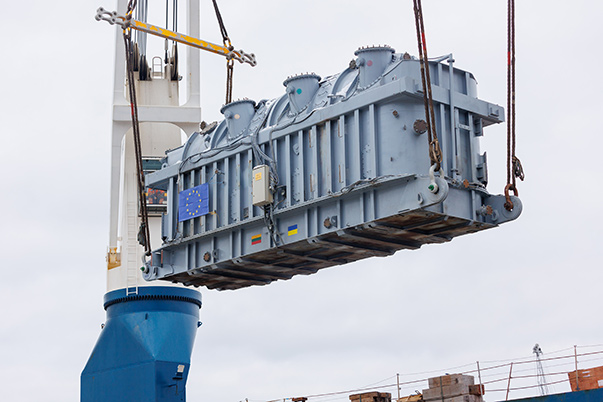
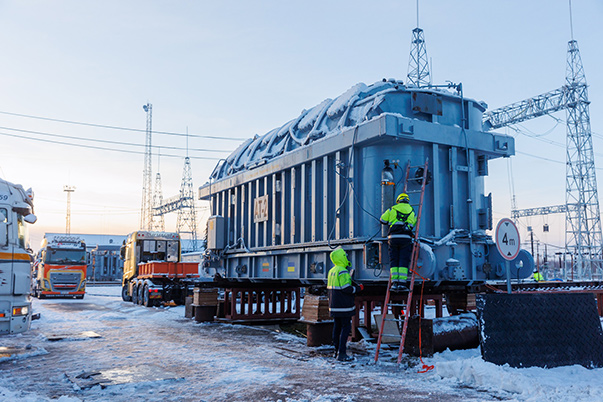
The EU has also deployed assistance from its rescEU - open a new tab. stockpiles. rescEU is a reserve of European capacities, fully funded by the EU. It includes a fleet of firefighting planes and helicopters, medical evacuation planes and a stockpile of medical items and field hospitals that can respond to emergencies. For Ukraine, the EU has deployed power generators, medical equipment and temporary shelter units.
Additionally, water treatment stations were dispatched in response to the Nova Kakhovka dam breach - open a new tab., while specialised equipment – such as decontaminants, protection suits and iodine pills – was supplied in response to public health risks, such as chemical, biological, radiological and nuclear threats.
To help Ukrainian children return to school, the EU launched the campaign ‘School buses for Ukraine - open a new tab.’ in December 2022. As a result, more than 380 buses were sent to Ukraine by the EU and its Member States.
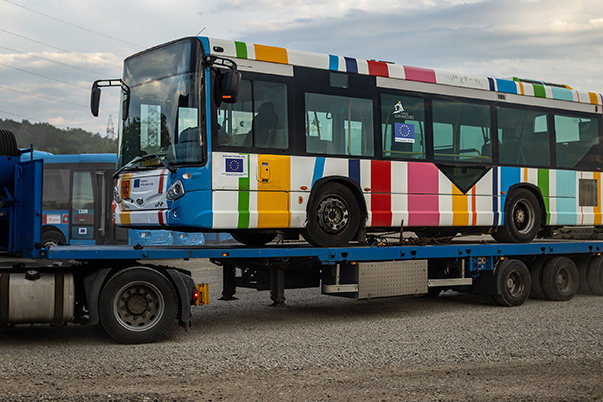
Welcoming those fleeing the war
Russia’s unprovoked and unjustified war of aggression against Ukraine triggered the largest forced displacement of people in Europe since the Second World War. To protect the rights of people fleeing to the EU from Ukraine, the EU swiftly introduced the Temporary Protection Directive - open a new tab.. By the end of 2023, almost 4.2 million people from Ukraine enjoyed the right to residence, housing, healthcare, education and work in the EU. In October, this temporary protection was extended until March 2025. The Solidarity Platform - open a new tab. helped Member States to coordinate the reception of refugees from Ukraine - open a new tab., and continues to help implement the directive.
To protect Ukrainians, the EU:
Ensuring swift and effective integration into the labour market is another important way in which the EU welcomes those fleeing the armed conflict. Measures adopted under the cohesion policy in 2022, such as the Cohesion’s Action for Refugees in Europe - open a new tab. and Flexible Assistance to Territories - open a new tab. packages, introduced the necessary flexibility in the cohesion-policy funding rules to ensure that Member States could use this funding to welcome refugees from Ukraine. In 2023, these measures continued to allow funding to be allocated to social integration programmes, healthcare, food, basic assistance and orientation for the job market. The latter area includes language courses, education, social services and childcare. Employment helps people rebuild their lives, develop their skills, contribute to their host communities and, eventually, support reconstruction in Ukraine.
More than 1.5 million Ukrainians are now working in the EU.
Source: European Network of Public Employment Services survey - open a new tab..
The EU is helping Ukrainians integrate into the labour market by allowing for the swift validation of skills and the recognition of professional and academic qualifications. It has set up the EU Talent Pool Pilot - open a new tab., an online job-searching tool that matches people who have fled the war in Ukraine with suitable jobs and vacancies. In addition, Member States’ public employment services connect jobseekers with employers at the national level. In July, the European Network of Public Employment Services adopted common guidelines to further support labour market integration.
The EU is also dedicated to ensuring access to high-quality education for displaced Ukrainian children. It has mobilised several tools, mainly under the European Education Area strategic framework - open a new tab., such as policy guidance on peer learning, online platforms and funding. The Erasmus+ - open a new tab. funding programme is also being used to support the education of refugee students. Higher education is further supported through the MSCA4Ukraine - open a new tab. fellowship scheme. Thanks to the funding and support provided by this initiative, by the end of 2023, 124 Ukrainian researchers had been able to continue their work in the EU and in various non-EU countries that are part of the Horizon Europe programme.
In addition, the Commission has launched three new initiatives - open a new tab. to boost the EU’s cooperation on research and innovation with Ukraine: a new Horizon Europe office in Kyiv - open a new tab.; the new European Innovation Council initiative to support the Ukrainian deep tech community - open a new tab.; and a new European Institute of Innovation and Technology community hub - open a new tab..
Lastly, the EU knows the value of cultural expression in helping people process traumatic events and in creating a sense of community and mutual understanding. In 2022, the EU’s Creative Europe programme launched a call for projects - open a new tab. that would support artists and cultural organisations outside of Ukraine. In May 2023, the winners - open a new tab. were announced: the ZMINA, Culture Helps and U-RE-HERIT consortia will support Ukrainian artists and contribute to the reconstruction of Ukraine’s cultural heritage.
Integration into the Single Market and other agreements
In April 2023, Ukraine joined the EU Civil Protection Mechanism - open a new tab. as a participating state. In August, while still in the process of formal accession to the mechanism, Ukraine contributed 51 first responders and 19 vehicles to assist in rescue efforts in Slovenia following devastating floods. As a fully participating state, Ukraine will be able to dispatch aid via the mechanism alongside other members when another country faces a crisis, offering the same solidarity it has received. It also signals an important step towards EU integration for Ukraine and extends the EU Civil Protection Mechanism’s Eastern Neighbourhood.
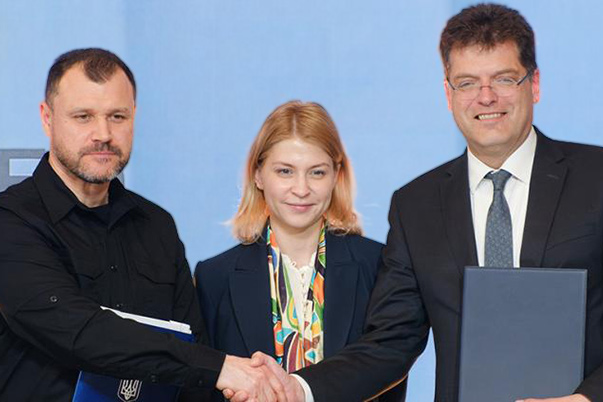
Ukraine has been further integrated into the EU’s Single Market by joining the Single Market Programme - open a new tab., signing an association agreement at a meeting between the European Commissioners and the Ukrainian government - open a new tab. in Kyiv on 2 February 2023. This agreement allows small and medium-sized enterprises in Ukraine to benefit from specific calls for proposals that can result in funding, and to participate in initiatives like Erasmus for Young Entrepreneurs - open a new tab. and the Enterprise Europe Network - open a new tab..
Two calls for proposals - open a new tab., with a total budget of €7.5 million, were launched specifically to support the integration of Ukrainian small and medium-sized enterprises into the Single Market. In addition, work progressed swiftly on the negotiations for an Agreement on Conformity Assessment and Acceptance of Industrial Products - open a new tab. with Ukraine. This agreement, once in place, will foster economic integration, thereby assisting the Ukrainian economy and Ukrainian businesses in their recovery.
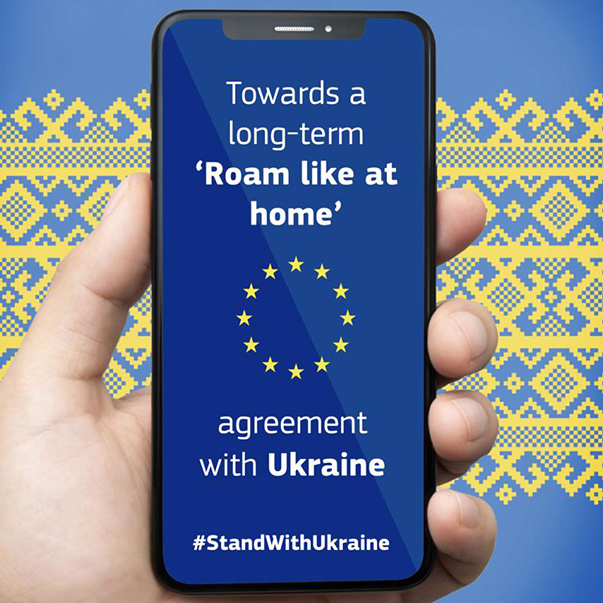
Ukraine also benefits from another important Single Market feature. In April 2022, the EU collaborated with European and Ukrainian mobile operators - open a new tab. to offer affordable or free roaming between the two regions. This agreement, renewed in July 2023 for another year, aids those displaced from Ukraine in maintaining contact across borders, with operators further reducing connection costs.
Simultaneously, the Commission is working on embedding this roaming agreement into the EU–Ukraine Association Agreement. Once finalised, it will ensure cost-free mobile use for both Ukrainian visitors in the EU and EU travellers in Ukraine. The pace of Ukraine’s integration into the EU’s roaming market will depend on its adoption and execution of relevant EU laws.
Food security
Russia is worsening the world food security crisis by deliberately blocking grain exports via the Black Sea, targeting grain silos and agricultural infrastructure in Ukraine and limiting the export of agricultural goods and fertilisers.
In 2022, the EU, its Member States, Ukraine and Moldova established the EU–Ukraine Solidarity Lanes - open a new tab. to get the grain trapped in Ukraine out to the rest of the world. These alternative routes, spanning railways, roads and waterways, facilitate both exports from Ukraine and vital imports such as humanitarian aid and fertilisers.
In June 2023, the EU announced that it was investing €250 million in nine cross-border projects - open a new tab. to improve connections between Ukraine, Moldova and their EU neighbours Hungary, Poland, Romania and Slovakia. The projects include studies and works at rail and road border-crossing points to extend and upgrade infrastructure, improve parking areas and improve transhipment facilities and equipment.
The Solidarity Lanes: a critical role in global food security
In total, in 2022 and 2023, the Solidarity Lanes enabled Ukraine to:
- export over 65 million tonnes of agricultural products, including nearly 61 million tonnes of grain, oilseeds and related products, including to those countries most affected by food scarcity;
- export over 51 million tonnes of non-agricultural products from Ukraine, such as ores, iron, steel and wood;
- generate about €44 billion for Ukrainian farmers and businesses;
- import over 43 million tonnes (with a value of €88 billion) of crucial goods such as fuel.
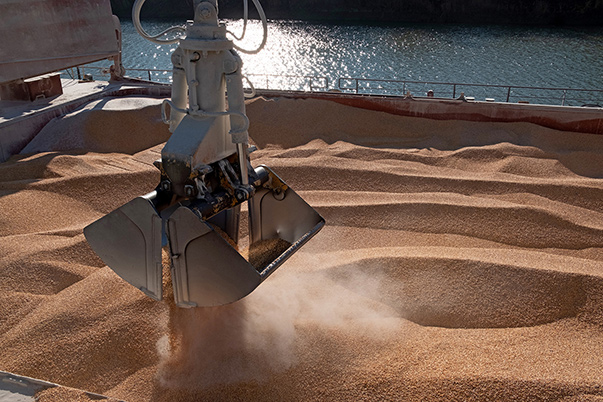
Finally, a Joint Coordination Platform - PDF file, open a new tab. was set up in 2023 to improve the flow of trade between the EU and Ukraine. The platform’s efforts intensified following Russia’s termination of the Black Sea Grain Initiative on 17 July, effectively halting grain exports via the Black Sea route.
Supporting Member States
The effects of Russia’s war of aggression against Ukraine are being felt beyond Ukraine’s borders. As neighbours of Ukraine, the Member States are also being affected, particularly in the areas of energy and food markets. (For more information on how the EU is addressing the energy crisis, see Chapter 4.)
In 2023, the EU authorised €487 billion in State aid to support Member States in the context of Russia’s war of aggression against Ukraine.
The Temporary Crisis and Transition Framework - open a new tab., applicable as of 9 March 2023, is one of the tools that Member States can use to mitigate the war’s effect on their economies.
The Temporary Crisis and Transition Framework gives Member
State
the
flexibility they
need to:
In addition, after suspending cooperation programmes with Russia and its ally Belarus, in 2023 the EU transferred an additional €135 million - open a new tab. initially envisaged for projects with these two countries to other programmes that will strengthen the cooperation between Member States and Ukraine and Moldova.
During the year, the EU also ensured that all regions in Estonia, Latvia, Lithuania, Poland and Finland that were supposed to participate in cooperation programmes with Russia and Belarus could participate in other existing interregional cooperation programmes.
Supporting EU farmers
Given the importance of Russia and Ukraine to the global supply of cereals and oilseeds, Russia’s ongoing war against Ukraine has created great uncertainty and volatility on these markets.
As Ukraine’s usual export routes through Black Sea ports have been blocked or heavily restricted, exports have not reached their destinations as effectively as before. Instead, Ukrainian cereals and oilseeds have increasingly been found in the markets of Member States neighbouring Ukraine, creating logistical bottlenecks.
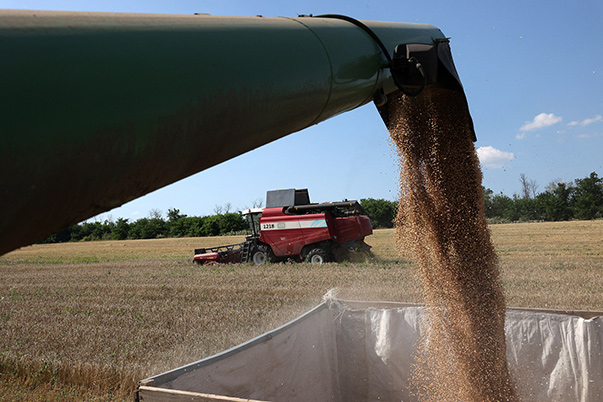
In 2023, the EU introduced two support packages and a temporary ban on the import of wheat, maize, rapeseed and sunflower seed from Ukraine to Bulgaria, Hungary, Poland, Romania and Slovakia, under the Autonomous Trade Measures for Ukraine Regulation - open a new tab.. This helped to alleviate logistical bottlenecks and address the concerns of farmers in the affected Member States, while still allowing the EU to continue its economic support of Ukraine in the form of zero tariffs on all Ukrainian imports.
In total, more than €156.3 million was provided from the Common Agricultural Policy agricultural reserve to support those farmers most affected in the five Member States neighbouring Ukraine. The Member States concerned were also permitted to use national means of support to provide additional compensation, if necessary, through either a top-up or dedicated State aid. Moreover, in a third support package - open a new tab., the Commission mobilised an additional €330 million of funding to be allocated to EU farmers in other Member States impacted by high input costs and specific problems caused by the Russian war of aggression. The recently established European Food Security Crisis Preparedness and Response Mechanism - open a new tab. enabled the swift mobilisation of expertise and drew the attention of public and private stakeholders to problems and bottlenecks at an early stage. The outcome of the discussions among these stakeholders directly informed the EU’s responses.
Investigation and prosecution of war crimes
Since Russia’s war of aggression against Ukraine began, Russian authorities have continually violated international human rights, with numerous reports of war crimes and attacks on civilians. By the end of 2023, Ukraine and 16 Member States had launched investigations into the international crimes committed by Russia in Ukraine.
Six days after the war began, the European Union Agency for Criminal Justice Cooperation - open a new tab. (Eurojust) helped establish a joint investigation team - open a new tab. with the purpose of collecting evidence and investigating war crimes and crimes against humanity. Today, the team consists of Ukraine, six Member States, the International Criminal Court and the European Union Agency for Law Enforcement Cooperation.
Because of the complexity of gathering evidence of international crimes (e.g. collecting testimonies from people in different countries), Eurojust also set up a database in 2023 to preserve and store evidence of these crimes (the Core International Crimes Evidence Database - open a new tab.). Eurojust will lend its expertise to this database by analysing the evidence, and will provide practical guidance to national judicial authorities in identifying evidence located in other countries that may be relevant to their own investigations.
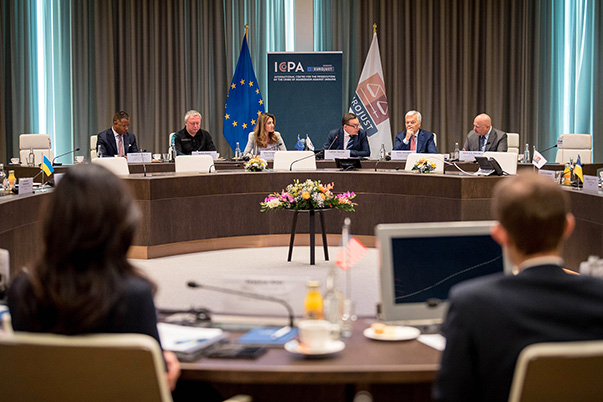
Eurojust also hosts the newly established International Centre for the Prosecution of the Crime of Aggression against Ukraine - open a new tab.. Opened in July 2023, the centre is composed of independent national prosecutors from the joint investigation team’s members and six Ukrainian prosecutors, and was set up to prepare and contribute to any future prosecution of Russia’s crime of aggression against Ukraine. A crime of aggression is when high-ranking political and military leaders plan, initiate or carry out large-scale acts of aggression using state military force. This is the first time in history that such a crime is being investigated as it unfolds.
At the centre, prosecutors will be able to work together on-site, enabling them to exchange evidence quickly and agree on the way in which they will carry out their investigative and prosecution strategy. The Core International Crimes Evidence Database will be central to its work, and the evidence collected by the centre can be used before other jurisdictions, including national and international courts.
Eurojust support for justice for Ukraine

Support for investigations (International Centre for the Prosecution of the Crime of joint investigation teams)
Collection, preservation and analysis of evidence (Core International Crimes Evidence Database)
Practical guidance
Training for judicial practitioners
Support for the EU Freeze and Seize Task Force
Through its Freeze and Seize Task Force, Eurojust is also ensuring that EU sanctions are properly implemented. The task force is investigating possible links between criminal activity and Russian and Belarusian individuals and businesses. It is also looking at how criminal-law measures such as asset confiscation can contribute to the reconstruction of Ukraine.
Ukraine’s reconstruction
The EU is committed to ensuring that Russia will pay for the damage caused in Ukraine. As such, it is exploring options to support the reconstruction of Ukraine – in line with EU and international law – with the extraordinary revenues generated by the management of the Russian central bank reserves that are currently frozen in the EU because of sanctions. To this end, in December the Commission adopted proposals on the freezing of extraordinary windfall revenues from Russian central bank assets.
The EU is also coordinating the reconstruction of Ukraine with its international partners. The EU, Ukraine and G7 partners launched - open a new tab. the G7 Multi-agency Donor Coordination Platform - open a new tab. in January 2023. The platform plays a key role in coordinating support for Ukraine’s immediate financing needs and for its future economic recovery and reconstruction across various sources and established financing instruments.
During the February visit to Ukraine by the College of Commissioners, the EU announced a €1 billion aid package for the reconstruction efforts as part of its overall package of assistance to the country. The Commissioners and the Ukrainian government also discussed how the EU could help Ukraine rebuild its cities in a sustainable and inclusive way. The Phoenix - open a new tab. (Project for a Holistic Orientation towards Environmental New Infrastructure in Ukrainian Cities) initiative was launched in March. The initiative will allow Ukrainian cities access to cutting-edge technologies and expertise from the New European Bauhaus - open a new tab. community. It will also connect Ukrainian cities with similar ones in the EU to exchange know-how and good practices on how to build climate-neutral and more energy-efficient cities. It will combine funding from the Horizon Europe Mission for Climate-Neutral and Smart Cities - open a new tab. and the LIFE programme - open a new tab., with the immediate mobilisation of at least €7 million.
Finally, at the Ukraine Green Recovery Conference - open a new tab. that took place between 28 November and 1 December in Vilnius, Lithuania, the EU reaffirmed its continued support for Ukrainian municipalities and presented the ongoing implementation and the first results of the Phoenix initiative. In parallel, the Circular Economy Mission - open a new tab. brought EU companies and industry stakeholders focusing on the circular economy together with Ukraine-based businesses and public buyers, boosting the business dimension of Ukraine’s green recovery.
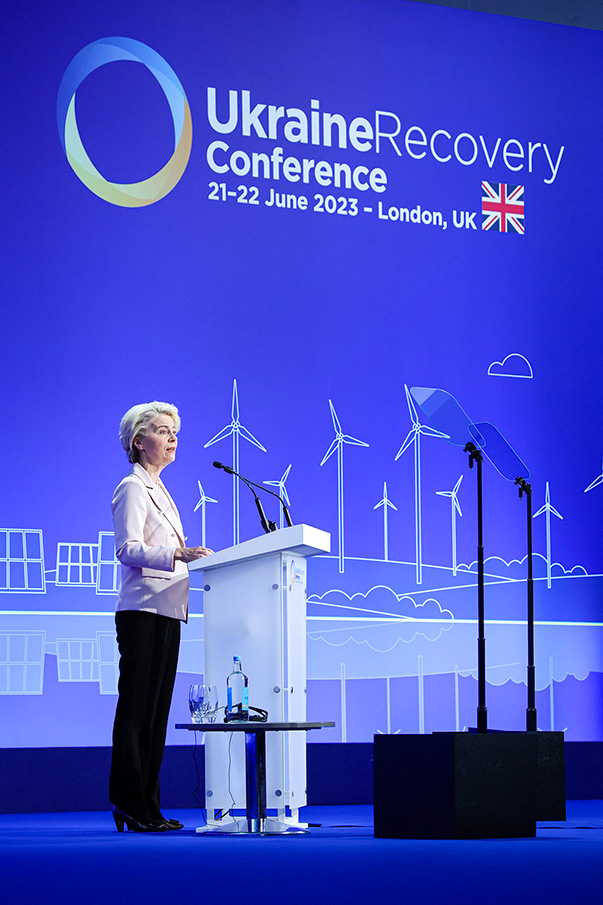
At the Ukraine Recovery Conference - open a new tab. in London, in June, the EU presented a new facility proposing up to €50 billion in grants and loans to aid Ukraine’s recovery and modernisation from 2024 to 2027.
This demonstrated the EU’s unwavering support for Ukraine amid Russia’s ongoing war of aggression and affirmed its commitment to Ukraine’s path towards EU membership.
Additionally, the EU signed agreements amounting to more than €800 million to mobilise private investment for the recovery and reconstruction of Ukraine’s economy.
